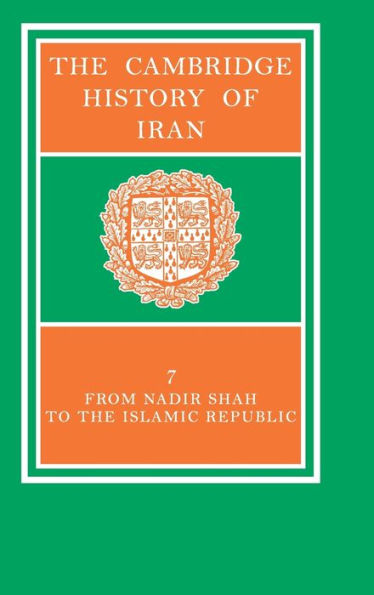The Cambridge History of Iran
This final volume of The Cambridge History of Iran covers the period from 1722 to 1979. Part I sets out the political framework. Beginning in the reign of Nadir Shah, it traces the establishment of the Qajar dynasty and the rise and fall of the Pahlavi autocracy. Part II discusses relations with the Ottoman Empire, Russia, European countries, Britain and British India. Part III covers economic and social developments, including systems of land tenure and revenue administration, the tribes, the traditional Iranian city, European economic penetration and the impact of the oil industry. In Part IV religious and cultural life is examined. There are chapters on religious change and Iranian arts and crafts - including architecture, ceramics, painting, metalwork and textiles, from the eighteenth to the twentieth centuries - and popular entertainment, literature, and the press in modern Iran. The contributors to this volume represent the most informed and up-to-date international scholarship on the region. Together they have provided a unique survey of the modern period in Iranian history, leading up to the formation of the Islamic Republic.
1100943657
The Cambridge History of Iran
This final volume of The Cambridge History of Iran covers the period from 1722 to 1979. Part I sets out the political framework. Beginning in the reign of Nadir Shah, it traces the establishment of the Qajar dynasty and the rise and fall of the Pahlavi autocracy. Part II discusses relations with the Ottoman Empire, Russia, European countries, Britain and British India. Part III covers economic and social developments, including systems of land tenure and revenue administration, the tribes, the traditional Iranian city, European economic penetration and the impact of the oil industry. In Part IV religious and cultural life is examined. There are chapters on religious change and Iranian arts and crafts - including architecture, ceramics, painting, metalwork and textiles, from the eighteenth to the twentieth centuries - and popular entertainment, literature, and the press in modern Iran. The contributors to this volume represent the most informed and up-to-date international scholarship on the region. Together they have provided a unique survey of the modern period in Iranian history, leading up to the formation of the Islamic Republic.
435.0
Out Of Stock
5
1

The Cambridge History of Iran
1096
The Cambridge History of Iran
1096
435.0
Out Of Stock

Product Details
| ISBN-13: | 9780521200950 |
|---|---|
| Publisher: | Cambridge University Press |
| Publication date: | 10/10/1991 |
| Series: | The Cambridge History of Iran , #7 |
| Edition description: | Reissue |
| Pages: | 1096 |
| Product dimensions: | 6.97(w) x 11.93(h) x 2.52(d) |
From the B&N Reads Blog
